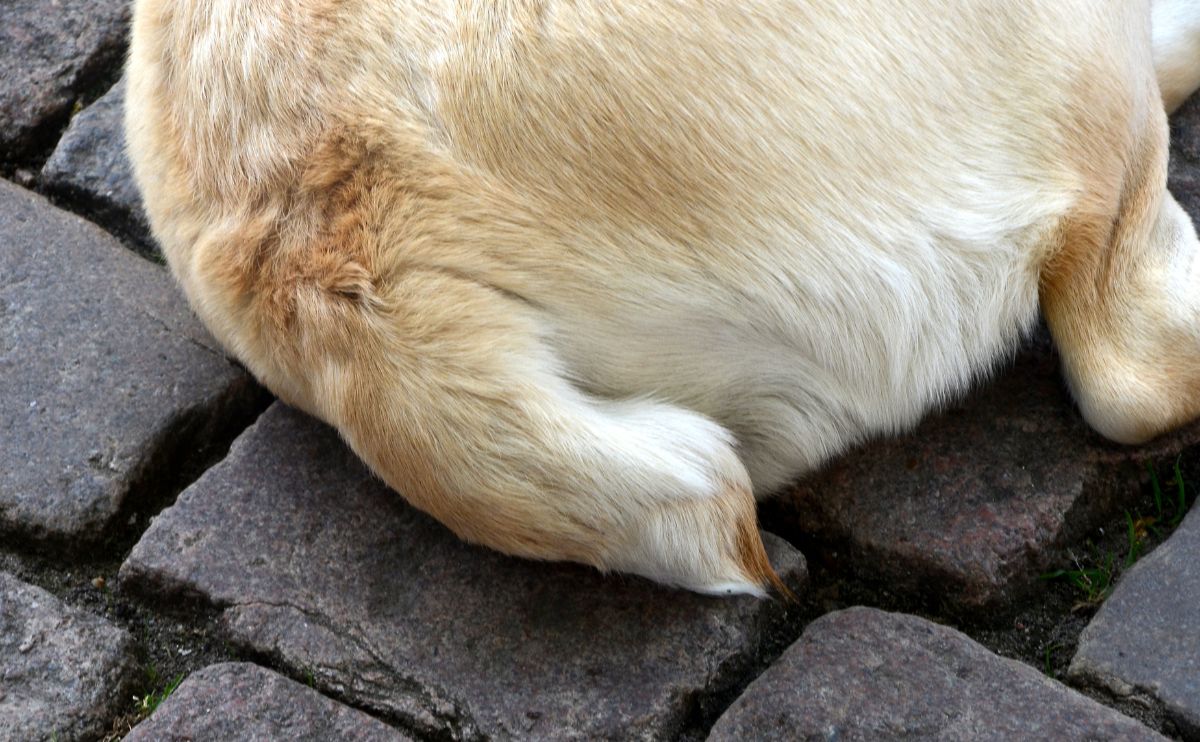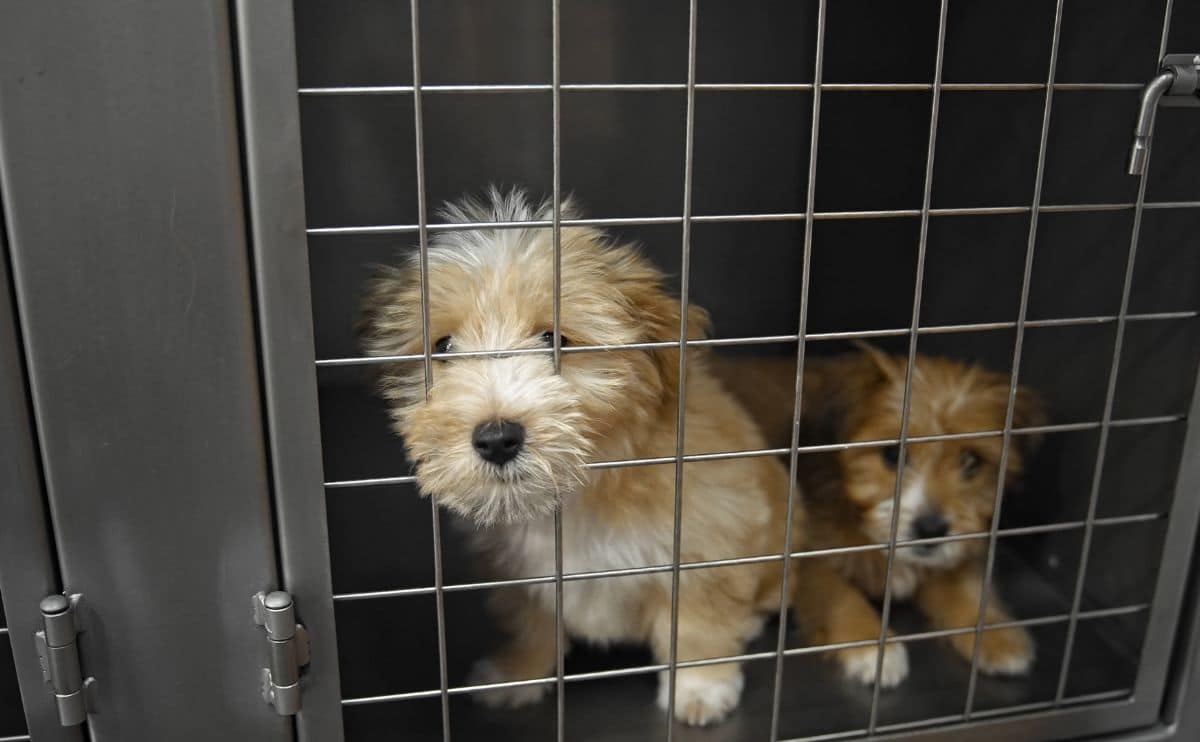When you purchase through links on our site, we may earn a commission. Here’s how it works.
At 2 a.m., when the back gate creaked open, Luna, a 90-pound Bullmastiff, was already at the door. Calm but alert. By the time Sarah reached the nursery, Luna had taken her place between the crib and the noise outside.
Table of Contents
No panic. Just silent, instinctive protection. That moment is exactly why many parents start searching for the best guard dogs for families – breeds that not only deter threats but also form a deep bond with the people they protect.
It’s not just about strength or size; it’s about finding a breed that can defend your home and love your children like one of their own. The right dog can be your early warning system, your loyal companion, and your child’s best friend, all wrapped into one. But not every protective breed is built for family life.
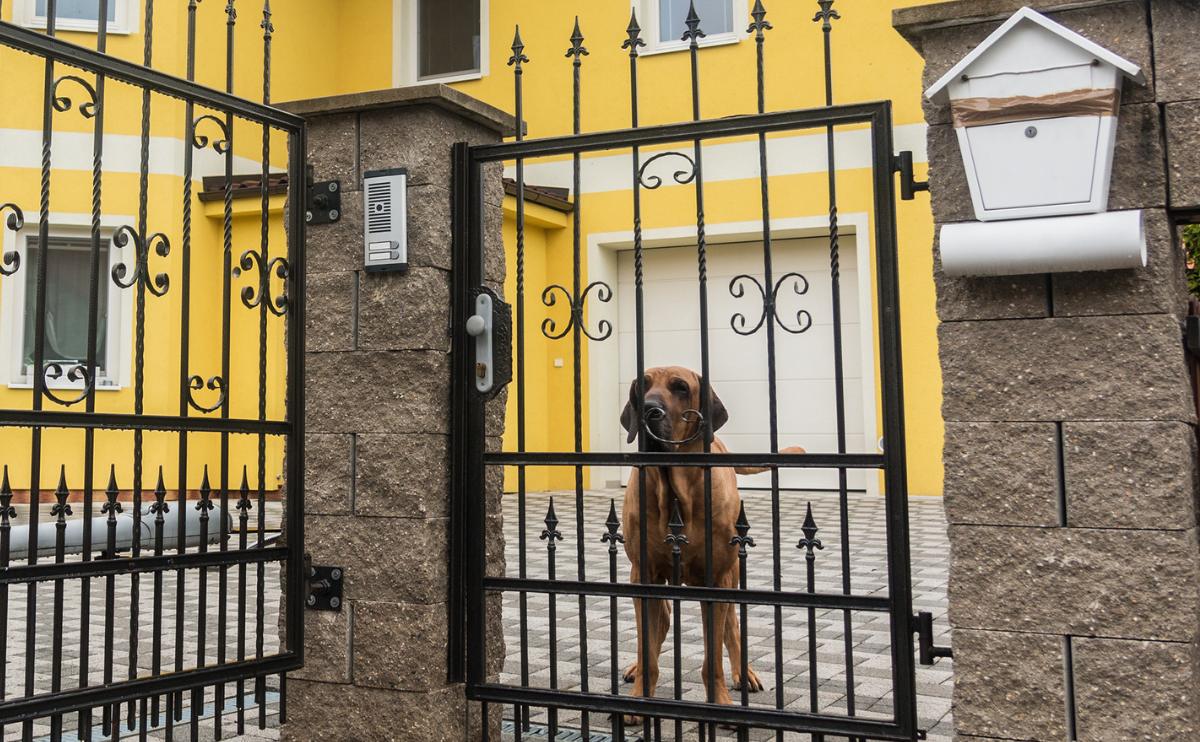
That’s why we’ve curated this guide: to help you discover the most loyal, loving, and trustworthy guard dogs for families, backed by breed traits, real-life experiences, and expert guidance.
Not Just Any Dog: Choosing the Right Family Protector
Bringing a guard dog into your home isn’t just about choosing the most intimidating breed. It’s about finding a companion to protect your home while thriving in a family environment. The best guard dogs for families are loyal, loving, and level-headed. They know when to be gentle and when to stand their ground.
Let’s explore the key factors to help you choose the right dog for your household.
The 5 Traits That Make a Great Family Guard Dog
When choosing a protective breed for a family setting, look for a balance of instinct, intelligence, and social temperament. The ideal guard dog should possess the following:
- Protective instincts. Naturally alert and territorial without being aggressive.
- Gentleness with children. Calm and tolerant, even around loud or unpredictable little ones.
- Loyalty. Strong bond with family members and a willingness to defend them.
- Trainability. Ability to follow commands consistently, especially under stress.
- Adaptability. Comfortable in various home settings, from apartments to large backyards.
These traits make for a dog that doesn’t just guard. They belong. A good family guard dog offers both emotional comfort and real-world protection.
Why Temperament Matters More Than Toughness
Being labeled “protective” doesn’t always mean a dog is right for family life. Without the right temperament, even strong breeds can become reactive, anxious, or hard to manage around kids.
The best family guard dogs stay calm under pressure. They can distinguish between a genuine threat and a neighbor dropping by, and respond accordingly. That balance comes from the right mix of instinct, early training, and steady exposure to everyday life.
Take Boxers, for example. They may not look as intimidating as Dobermans, but their alert nature and affection toward children make them excellent family guardians. The best protectors don’t just react; they think before they act.
While certain behavioral tendencies like protectiveness or alertness can be more common in specific breeds, research shows that genetics account for only a portion of a dog’s overall temperament. Early socialization, environment, and training play a much larger role in shaping how a dog behaves in a family setting.
Considerations for Homes with Children
Beyond protection, well-socialized dogs can offer real emotional benefits to children. Research published in the National Library of Medicine (NIH) indicates that children who grow up with dogs tend to exhibit greater emotional regulation, empathy, and social confidence. The bond between child and pet can foster security, reduce stress, and even support healthy behavioral development.
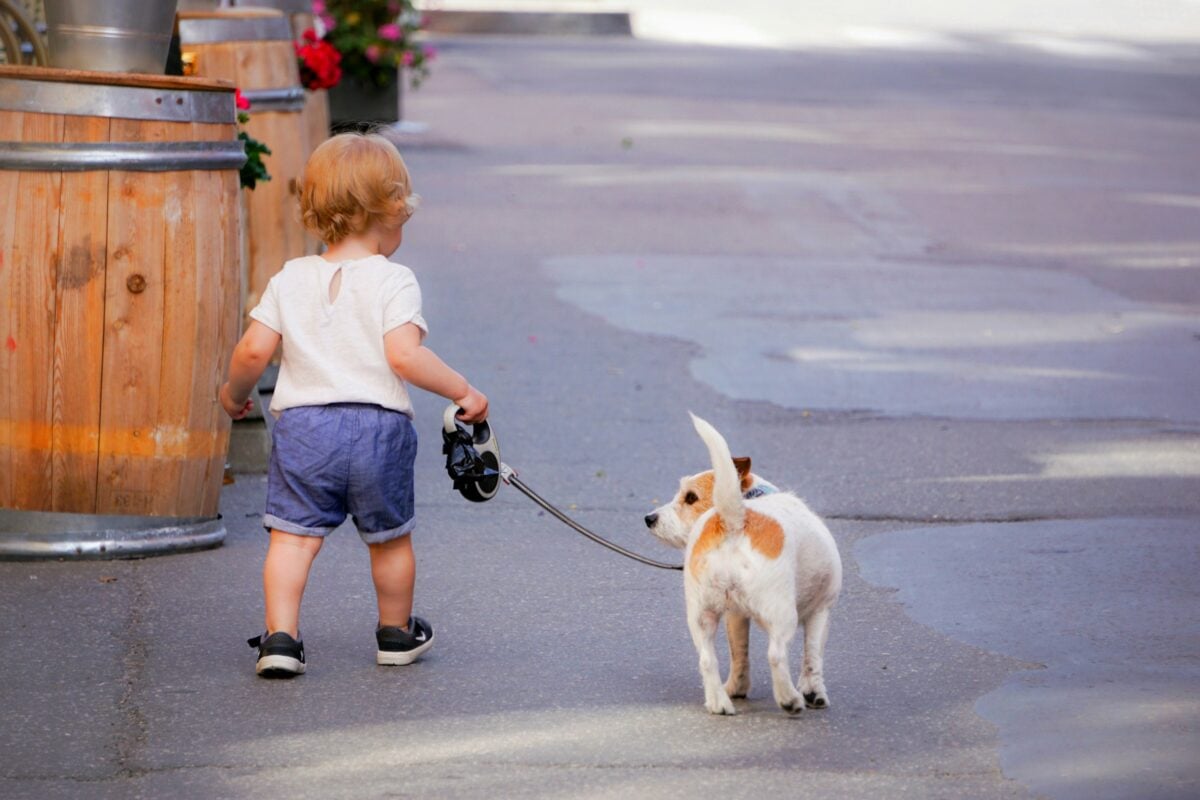
Choosing the right dog for your family also means understanding your household’s specific needs.
- If you have young children, look for a breed known for patience and a gentle nature. Avoid dogs that are overly territorial or high-strung.
- If you live in an apartment or a small home, consider medium-sized breeds with lower energy levels, like a Bullmastiff or a Standard Poodle.
- A busy lifestyle also matters. Some protective breeds need daily training, extended walks, and mental stimulation to thrive. The dog may become stressed or reactive if you cannot meet those needs.
Also, consider allergy concerns, shedding, and how much physical space the dog will need. A well-matched dog becomes part of the family, not a source of tension.
10 Guard Dog Breeds That Know How to Love and Protect
Now that you know what to look for in a family-friendly protector, it’s time to explore the breeds that stand out as the best family guard dogs. Each of these dogs offers a unique combination of loyalty, protection, and compatibility with children.
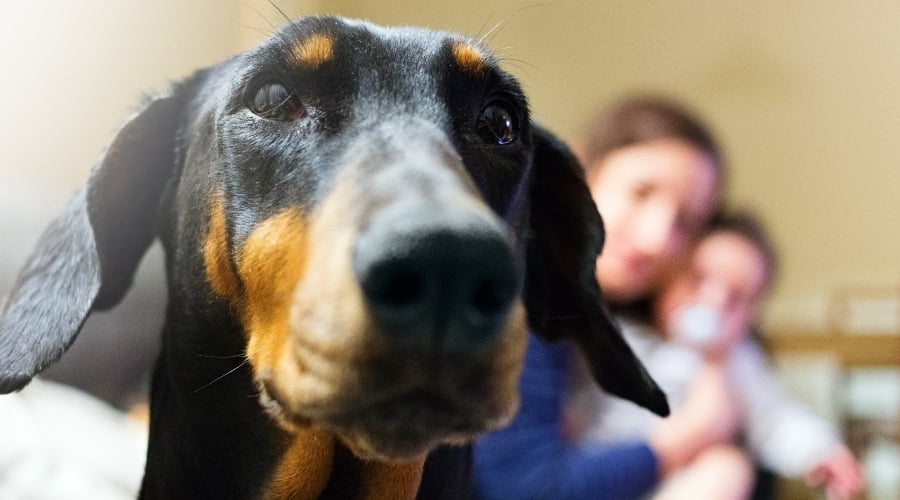
Continue reading to meet the breeds that protect your home and your heart.
1. German Shepherd
Quick Overview: German Shepherds are confident, intelligent, and highly trainable. Originally bred for herding, their natural protective instincts make them a top choice for family guard dogs. Highly intelligent and fiercely loyal, the German Shepherd is one of the most versatile dog breeds.
- Kid-Friendliness: High
- Protection Instinct: Very High
- Trainability: Very High
- Size: 50 – 90 lbs
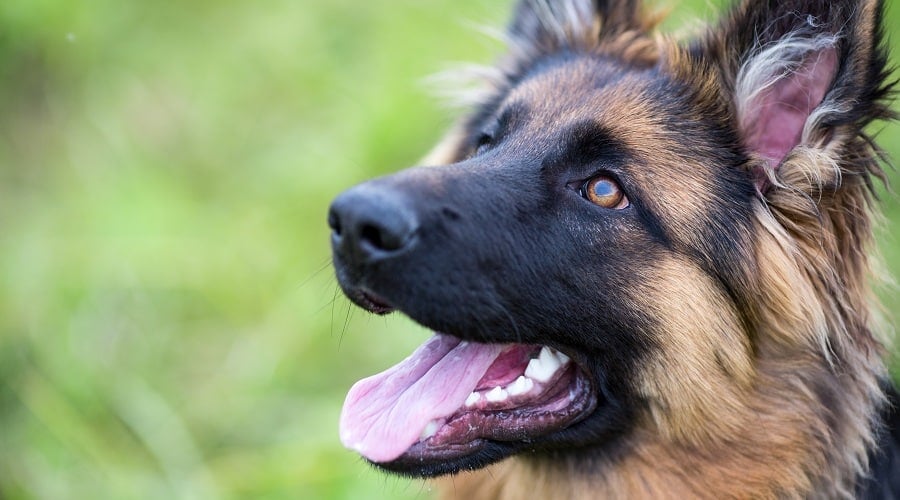
Best For: Active families who can provide structure, socialization, and plenty of mental and physical stimulation.
What to Know: Needs consistent training and leadership from an early age. Highly loyal and eager to work, they thrive in a job with clear objectives. Can become restless without stimulation. Generally healthy but prone to hip dysplasia.
2. Rottweiler
Quick Overview: Rottweilers are powerful, loyal, and intelligent protectors with roots dating back to Roman cattle dogs. When trained early and properly, they form deep, affectionate bonds with their families, including children.
In more recent years, they have been used for personal protection as well as working in law enforcement and service.
- Kid-Friendliness: High (with early training)
- Protection Instinct: Very High
- Trainability: Moderate
- Size: 80 – 135 lbs

Best For: Experienced dog owners who can provide consistent leadership and socialization from puppyhood. Works best in homes with minimal foot traffic or predictable visitors.
What to Know: Rottweilers need structure and early socialization to prevent dominant behavior. They thrive under firm, calm leadership and can be highly affectionate once bonded with children. While generally healthy, they’re prone to joint issues and cancer. Balanced exercise and close monitoring of diet are important for long-term wellness.
Why I’ll Always Trust a Rottweiler: A Family Story That Changed Everything
When we adopted Jade, our Rottweiler puppy, we were looking for more than just a pet. We needed a steady, loyal companion for a disabled family member.
From the beginning, Jade demonstrated intuition and emotional awareness that exceeded our expectations. She’s sweet, fiercely loyal, and always alert to the needs of the people around her.

Jade doesn’t just provide companionship. She brings calm to stressful situations and offers silent support in moments of anxiety or unpredictability. Her presence has made a measurable difference in our family’s daily life.
She’s been with us for over a decade now. The journey hasn’t been without challenges; she nearly died from parvovirus as a pup, and we’ve faced a few costly health issues along the way. Her impact has been priceless. One piece of advice: if you adopt a Rottie, get pet insurance early. It helped us when we needed it most.
Jade is more than a guard dog. She’s family. And if given the chance, I’d adopt another Rottweiler in a heartbeat.
3. Bullmastiff
Quick Overview: Bred to guard estates in England, Bullmastiffs are large, watchful, and loyal. They combine strength with a surprisingly gentle temperament when raised in a family environment.
Bullmastiffs are very aware of everything going on around them, and their intimidating look makes them a wonderful choice for fending off intruders without putting your children at risk.
- Kid-Friendliness: High
- Protection Instinct: High
- Trainability: Moderate
- Size: 100 – 140 lbs
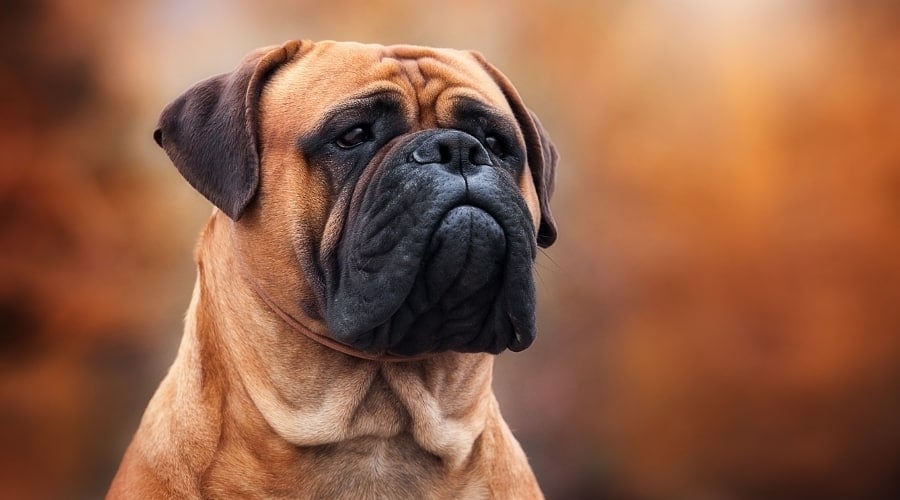
Best For: Families with enough space and a confident owner who can provide early structure and training.
What to Know: Powerful but calm indoors. Needs early socialization and leash training. May develop hip and joint problems or heart issues. Not always compatible with other pets if not raised with them.
4. Doberman Pinscher
Quick Overview: Dobermans are sleek, athletic, and incredibly loyal. Originally bred for personal protection, they remain one of the most alert and disciplined guard breeds today. Their reputation for intelligence and discipline made them ideal for security and military work.
- Kid-Friendliness: High (with socialization)
- Protection Instinct: Very High
- Trainability: High
- Size: 60 – 100 lbs
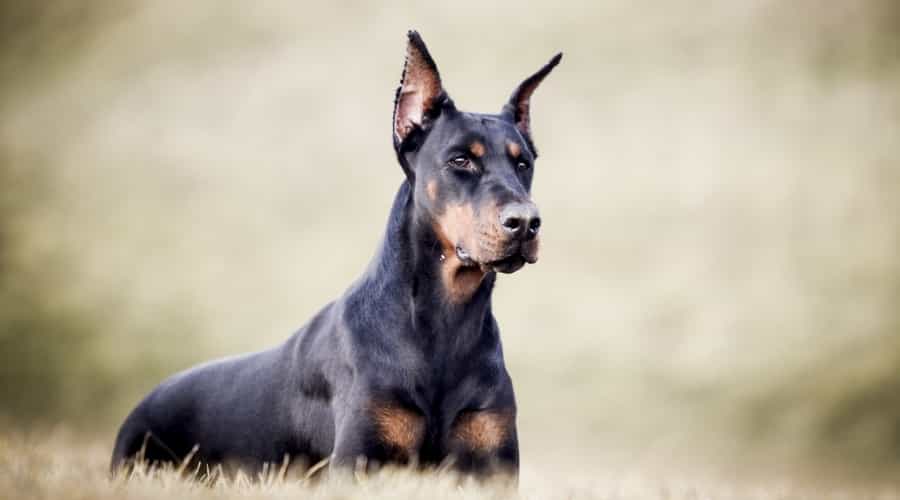
Best For: Structured households with experienced owners who can provide both physical and mental stimulation.
What to Know: Needs early socialization to avoid reactivity. Requires consistent training, leadership, and daily exercise.
Dobermans are prone to several health issues, including heart disease (DCM), Wobbler syndrome, and a bleeding disorder called von Willebrand’s. They can also face thyroid problems, hip dysplasia, liver disease, and bloat. Regular vet care helps catch these early, and pet insurance can be beneficial in managing care costs.
5. Great Dane
Quick Overview: Despite their imposing size, Great Danes, also known as the German Mastiff, are known for being gentle giants. Affectionate, calm, and easygoing, they make surprisingly good watchdogs.
They are gentle, affectionate, and often described as “couch potatoes.” Their calm nature makes them surprisingly well-suited for life with children and other pets, provided early training is prioritized.
- Kid-Friendliness: High
- Protection Instinct: Moderate
- Trainability: Moderate
- Size: 110 – 175 lbs
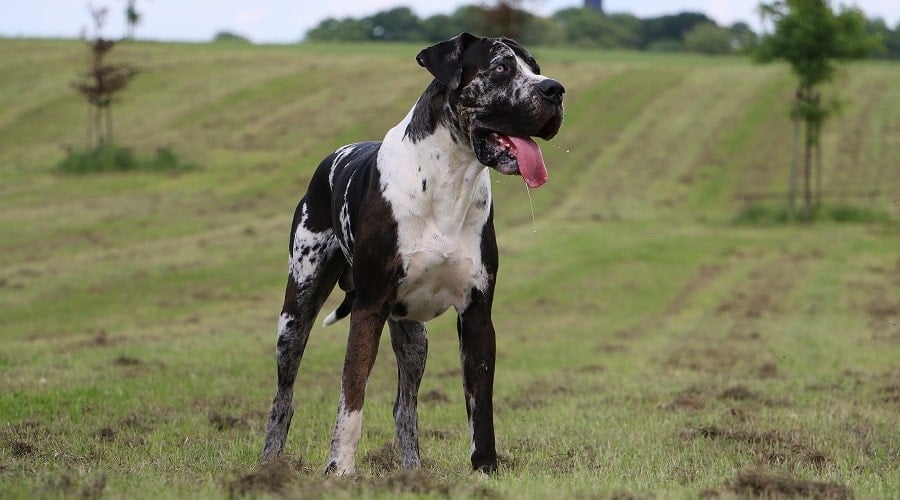
Best For: Families with large homes or yards who want a calm, watchful presence, not an aggressive guard. This is not a great dog pick for apartments or smaller homes due to their sheer size.
What to Know: Shorter lifespan (7–10 years). Prone to bloat, heart issues, and joint problems. Early training and gentle discipline are essential. May develop separation anxiety if left alone often.
6. Boxer
Quick Overview: The Boxer descends from the German Bullenbeisser, a breed known for its strength and agility in hunting and working roles. They are energetic, expressive, and full of personality. Boxers are protective without being aggressive and deeply affectionate with children.
- Kid-Friendliness: Very High
- Protection Instinct: Moderate
- Trainability: High
- Size: 48 – 85 lbs

Best For: Active families who want a playful but alert companion. Modern Boxers are energetic, fun-loving, and deeply connected to their families. Their joyful personality makes them one of the most entertaining breeds to live with.
What to Know: Needs daily exercise and consistent training. Sensitive to heat. Prone to heart conditions, bloat, and joint issues. Requires ongoing mental stimulation and bonding time.
7. Fila Brasileiros
Quick Overview: Also known as the Brazilian Mastiff, the Fila is fiercely loyal and extremely protective, making it best suited for experienced owners who can handle its territorial instincts. Their guarding instinct is so strong that they may not respond well to unfamiliar people, dogs, or situations.
- Kid-Friendliness: Moderate (with family only)
- Protection Instinct: Very High
- Trainability: Moderate
- Size: 88 – 180 lbs

Best For: Rural homes with limited guests and confident handlers who can provide early, firm training.
What to Know: Naturally distrustful of strangers. May not be legal or available in all areas. Needs a large, secure yard and ongoing supervision. Not recommended for homes with frequent visitors or small children unless the dog has been raised together from puppyhood.
8. Bernese Mountain Dog
Quick Overview: Gentle, steady, and people-focused, Bernese Mountain Dogs make wonderful family companions who alert rather than confront. Their balanced demeanor makes them an ideal choice for families seeking a protective yet peaceful presence in the home.
- Kid-Friendliness: Very High
- Protection Instinct: Moderate
- Trainability: Moderate
- Size: 80 – 115 lbs
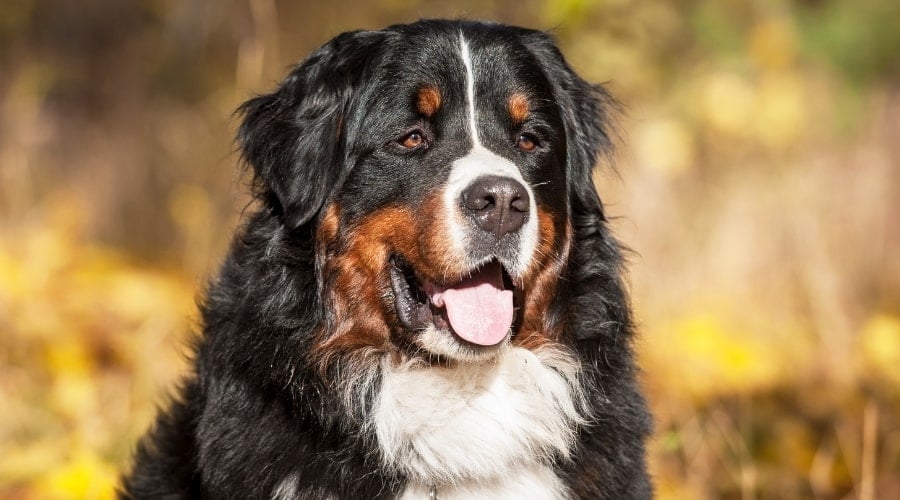
Best For: Families in cooler climates who want a calm, affectionate dog that doubles as a quiet watchdog.
Without overreacting, they’ll position themselves between their loved ones and a perceived threat. This balance of loyalty, sensitivity, and self-control makes them excellent watchdogs who protect through presence and intuition rather than force.
What to Know: Short lifespan (6–8 years). Prone to cancer, hip dysplasia, and bloat. Needs regular grooming and mental stimulation. Ideal for families with gentle children and households with lower energy levels.
They can develop separation anxiety if left alone too often and may be slow to warm up to strangers, needing early socialization to build confidence.
9. Great Pyrenees
Quick Overview: Calm and independent, the Great Pyrenees is a natural guardian with roots in livestock and a gentle touch with children. They’re intelligent, highly independent, and thrive on responsibility. Their alertness and size are often enough to deter unwanted guests.
- Kid-Friendliness: High
- Protection Instinct: High
- Trainability: Low–Moderate
- Size: 85 – 120 lbs

Best For: Families with large yards and patience for independent-minded dogs. While they’re not aggressive by nature, their protective instincts run deep. They will bark to alert, but rarely escalate unless truly necessary.
Their calm presence and innate sense of responsibility make them an ideal choice for families seeking a low-key yet highly vigilant companion.
What to Know: Prone to barking, especially at night. Heavy shedders. Needs firm, patient training and secure fencing. Protective without aggression, they work best as quiet guardians in peaceful homes.
10. Saint Bernard
Quick Overview: Saint Bernards are massive yet sweet, mild-mannered dogs, best known as gentle giants who love to be near children and their families. These dogs are incredibly gentle and patient, making them ideal guard dogs for households with children.
While they don’t act aggressively, their presence alone is a strong deterrent.
- Kid-Friendliness: Very High
- Protection Instinct: Low–Moderate
- Trainability: Moderate
- Size: 120 – 180 lbs
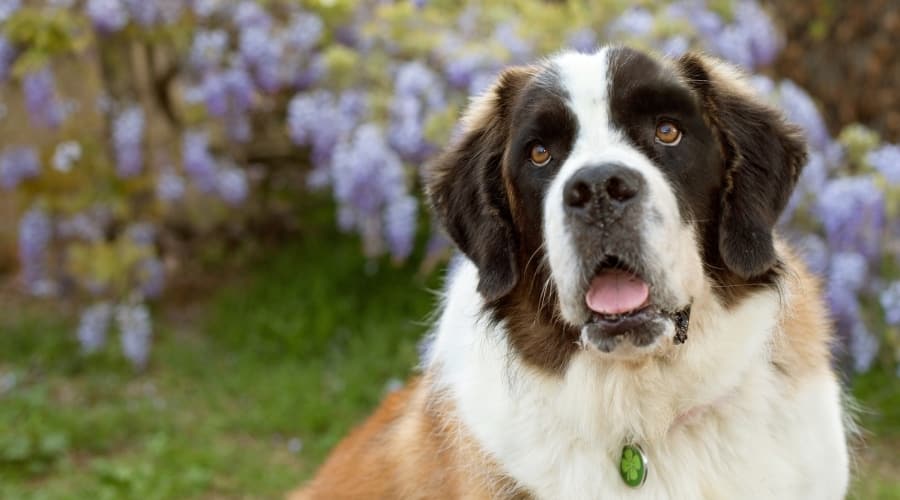
Best For: Families with space, patience, and a tolerance for drool and shedding. Ideal for laid-back households wanting a sweet but sizable companion. In a busy household, their steady presence is a source of calm and comfort.
Saint Bernards thrive when they’re part of everyday family life, lounging in the living room, napping beside a crib, or gently nudging their way into family activities. While they may not react aggressively to threats, their sheer size and booming bark are often enough to discourage unwanted visitors. This makes them one of the best guard dogs for families.
What to Know: Short lifespan (8–10 years). Prone to joint issues, bloat, and heart conditions. Can be clumsy during puppy growth spurts. Gentle training and orthopedic care are key to long-term comfort.
How Do These Breeds Compare?
Now that you’ve explored each breed’s unique traits, here’s a side-by-side comparison to help you quickly identify the best fit for your family. Whether you’re prioritizing kid-friendliness, protection level, or energy needs, this table highlights the key differences that matter most when choosing a family guard dog.
| Breed | Kid-Friendliness | Protection Instinct | Trainability | Energy Level | Size |
|---|---|---|---|---|---|
| German Shepherd | High | Very High | Very High | High | 50–90 lbs |
| Rottweiler | High* | Very High | Moderate | Medium | 80–135 lbs |
| Bullmastiff | High | High | Moderate | Medium | 100–140 lbs |
| Doberman Pinscher | High* | Very High | High | High | 60–100 lbs |
| Great Dane | High | Moderate | Moderate | Low–Medium | 110–175 lbs |
| Boxer | Very High | Moderate | High | Medium–High | 48–85 lbs |
| Fila Brasileiro | Moderate* | Very High | Moderate | Medium | 88–180 lbs |
| Bernese Mountain Dog | Very High | Moderate | Moderate | Medium | 80–115 lbs |
| Great Pyrenees | High | High | Low–Moderate | Medium | 85–120 lbs |
| Saint Bernard | Very High | Low–Moderate | Moderate | Low | 120–180 lbs |
*Requires early socialization and consistent training for kid-safe behavior.
Other Family Guard Dogs to Consider
While the 10 breeds listed above are among the most reliable choices for families, several other protective breeds can also make excellent companions with the right training and environment.

These dogs tend to be best suited for experienced owners or active households.
- Belgian Malinois: Incredibly intelligent, loyal, and driven. Frequently used in police and military work. Best for highly active, structured families that can commit to daily training and stimulation.
- Standard Poodle: Often overlooked as a guard dog, Poodles are alert, protective, and highly trainable — with the added bonus of being low-shedding and hypoallergenic.
- Rhodesian Ridgeback: Originally bred to hunt lions, these dogs are independent but loyal. With early socialization, they can be excellent family protectors with a calm presence.
- Cane Corso: A powerful Italian mastiff breed with strong guarding instincts. Best suited for experienced owners who can provide firm leadership and early training.
- Australian Shepherd: Naturally watchful and energetic. Not a traditional guard breed, but highly intuitive and protective of their people — especially in active homes with older kids.
As with any breed, temperament, training, and environment all play a crucial role. If you’re considering one of these breeds, be sure to research their specific needs and consult a professional trainer if you’re new to handling dogs that are protective.
5 Truths Every Family Should Know Before Choosing a Guard Dog
Before you bring home a big-hearted protector, it’s worth taking a step back. Choosing the right guard dog isn’t just about size or bark; it’s about long-term fit, safety, and harmony in your home.
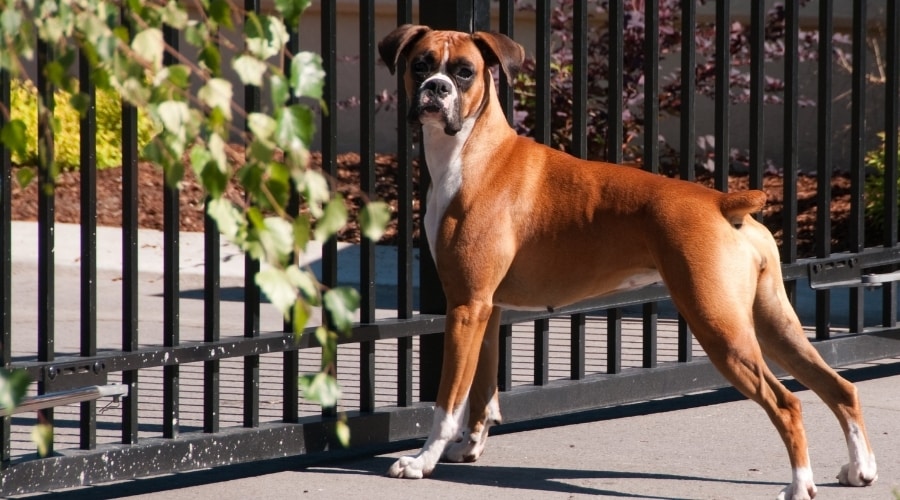
These five essential truths will help you make a smart, confident choice your whole family can live with.
- Breed ≠ Guarantee. Just because a breed is known for protection doesn’t mean every dog will behave that way. Personality varies within breeds, and many so-called “guard dogs” are more cuddle-bug than crime-stopper. Focus on individual temperament, not just reputation.
- Temperament starts with genetics. A dog’s behavior is shaped not just by training but by its bloodline. Reputable breeders and rescues screen for health and soundness — both physically and emotionally. Always ask about parents’ temperaments before adopting.
- Environment shapes behavior. Dogs raised in chaotic or unstructured homes may develop anxiety or reactivity, even if they come from a great breed. Early socialization, consistent boundaries, and positive reinforcement are what truly create confident, trustworthy protectors.
- Dogs have personalities, too. Some dogs love to chase squirrels. Others would rather nap in a sunny spot all day. Even within protective breeds, individual dogs have their own preferences, quirks, and comfort zones. Learn your dog, and don’t force a role they’re not built for.
- Health impacts performance. A dog with joint pain, poor eyesight, or chronic illness can’t reliably protect anything — including themselves. Understanding breed-specific health issues ahead of time helps ensure your dog lives a longer, safer, and more functional life.
A peer-reviewed study published in the journal Nature shows that genetic and environmental factors shape dog behavior. They significantly influence canine personality traits such as aggressiveness, trainability, and fear of strangers. Environmental factors, such as early socialization, also play a crucial role
Understanding these truths upfront can prevent costly mistakes and mismatched expectations down the line. With the right dog, your family gains more than just protection; you gain a companion who fits your lifestyle, grows with your kids, and brings peace of mind to every day.
From Protector to Playmate: Making Guard Dogs Safe for Children
A well-trained guard dog can be a child’s most loyal protector, but safety starts with the right breed and the right boundaries. Whether you’re bringing home a puppy or adopting an older dog, the goal is always the same: build trust through slow, structured introductions and mutual respect.
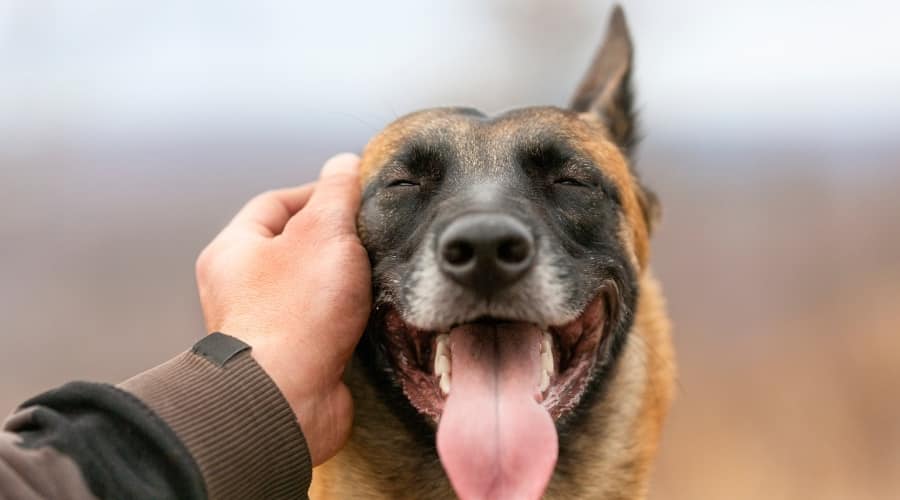
First Introductions: Start Slow, Stay Calm
- Let your dog observe before interacting. Give them space to watch the child at a safe distance.
- Use a scent-first approach. Offer the dog a blanket or onesie with your child’s smell before face-to-face meetings.
- Keep sessions short and positive. Praise calm behavior with treats and affection.
- Model gentle handling. Kids learn how to treat dogs by watching how you do it.
5 Ground Rules Every Family Should Set
Even the most patient breed needs clear limits. These simple rules prevent accidents and build trust:
- Always supervise dog–child interactions, especially with toddlers.
- Respect the dog’s space — no climbing, grabbing, or bothering them while eating or sleeping.
- Create a safe zone. Use baby gates or crate training to provide your dog with a retreat when they become overwhelmed.
- Skip aggressive games. Tug-of-war or wrestling can confuse boundaries and trigger instinctive behavior.
- Watch for signs of stress, such as yawning, lip-licking, or backing away. These are your dog’s way of saying “I need space.”
Guard Dog vs. Attack Dog: What Every Family Should Know
It’s a common misconception: a guard dog is not the same as an attack or fighting dog. True family guard dogs are calm, observant, and protective, not aggressive.

They rely on their presence, posture, and bark to deter intruders, stepping in only when truly necessary.
Attack or Schutzhund-trained dogs, on the other hand, are working animals trained for controlled aggression in law enforcement or military roles. That level of intensity doesn’t belong in most homes.
A great guard dog knows the difference between a stranger and a threat. With proper training and socialization, they protect by instinct, not by force.
Frequently Asked Questions About Family Guard Dogs
Still wondering if a guard dog is right for your home? You’re not alone. Here are some of the most common questions families ask when deciding on a protective companion, and what you should know before making the leap. If you don’t see your question, please drop it in the comments!
What’s the safest guard dog for homes with small children?
Breeds like the Boxer, Bernese Mountain Dog, and Bullmastiff are often praised for their gentle temperament with kids while still offering protective instincts. However, every dog is different; proper training and supervision are key.
Are female or male guard dogs better for families?
Female guard dogs are often more naturally nurturing and easier to train, while males may be more territorial. The difference is subtle and varies by breed — personality and upbringing matter more than gender.
Can I adopt a rescue dog as a family guard dog?
Yes, many rescue dogs from working or guardian breeds can thrive in family environments. Look for rescues that assess temperament and offer post-adoption training support. Avoid dogs with unknown behavioral histories if you have young children.
How early should I start training a guard dog?
Ideally, begin basic training and socialization between 8–16 weeks. This window is critical for helping dogs learn to distinguish between everyday life and real threats. Consistency and positive reinforcement are essential.
Will a guard dog make my home completely secure?
A well-trained guard dog is a strong deterrent, but not a full security system. While certain breeds are naturally protective and alert, relying on a dog as your primary security system is not only unrealistic, it’s unfair to the dog. A guard dog should complement your safety plan, not be your safety plan.
Pairing your dog’s protective instincts with a reliable home security system, locked doors, outdoor lighting, and secure fencing is essential.
The Best Guard Dog? The One That Fits Your Family
Before bringing a guard dog into your home, consider the long-term implications. Are you ready to treat this dog as a family member first and protector second? Prepare your space thoughtfully: install dog gates, create a safe yard, and ensure your home is dog-proofed, just like you would for a curious toddler. Your goal isn’t just protection; it’s building a safe, loving environment where your dog can thrive while helping keep your family safe
What’s Your Guard Dog Story?
Share your family guard dog stories with us! Whether it’s a touching moment or a lesson learned, we’d love to hear how your dog became part of your family’s safety and love. Share your story in the comments below.
